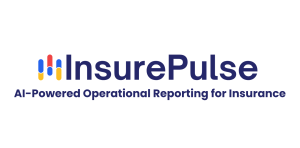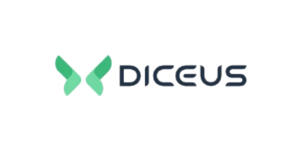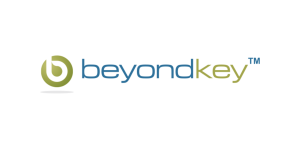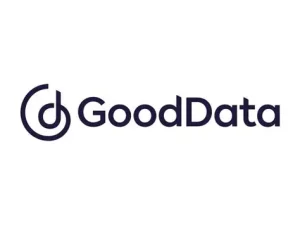In a world where customer expectations are evolving rapidly, and market competition intensifies by the day, insurance companies can no longer afford to rely on outdated data or fragmented insights. The modern insurer operates in a data-rich environment, yet much of that data remains locked in departmental silos, underutilised, and often disconnected from real-time decision-making.
This is where operational reporting becomes indispensable. Far from being just another BI tool, operational reporting is the foundation of real-time visibility, intelligent decision-making, and sustained profitability in insurance.
In this post, we’ll explore what operational reporting means in the insurance context, the transformative value it delivers, the challenges companies face in implementation, and the most promising solutions available today.
What is Operational Reporting?
Operational reporting focuses on the day-to-day activities and immediate performance of an organisation. Unlike strategic reports that provide a high-level overview for long-term planning, operational reports offer specific, real-time (or near real-time) insights into ongoing processes. In the context of insurance, this means monitoring everything from the moment a policy is quoted and issued, through premium collection, claims processing, customer service interactions, and even agent performance.
It’s about understanding how and why things are happening, allowing for immediate corrective action and continuous optimisation.
Building on this foundation, automated operational reporting leverages advanced technologies such as artificial intelligence, machine learning, and robotic process automation to streamline these reporting processes.
Why is Accurate Operational Reporting Essential for Insurance Companies?
The benefits of operational reporting in the insurance sector are multifaceted and profound, touching every aspect of the business. These benefits include:
- Enhanced Efficiency and Productivity
- Improved Decision-Making
- Proactive Risk Management and Fraud Detection
- Better Customer Experience
- Optimised Resource Allocation
- Regulatory Compliance and Audit Readiness
- Data-Driven Performance Culture
Enhanced Efficiency and Productivity
The most immediate and tangible advantage is a significant boost in operational efficiency. By providing real-time visibility into workflows, bottlenecks can be identified and addressed swiftly. For instance, if claims processing is consistently exceeding its target turnaround time, operational reports can pinpoint the exact stage where delays are occurring, allowing management to reallocate resources or streamline the process. This translates to faster service, reduced administrative burden, and ultimately, a more productive workforce.
Improved Decision-Making
Operational reports empower managers and executives with the data they need to make informed, timely decisions. Instead of relying on intuition or outdated information, they can act on current trends and performance indicators. For a sales manager, this means quickly identifying underperforming agents and providing targeted coaching. For a claims manager, it could mean anticipating a surge in certain types of claims based on emerging patterns and proactively adjusting resources. This agility is crucial in a dynamic market.
Proactive Risk Management and Fraud Detection
Real-time operational insights can significantly enhance an insurer’s ability to manage risk and detect fraud. By monitoring claim patterns, policy application anomalies, and suspicious activities in real-time, insurers can identify red flags much earlier. For example, unusual spikes in claims from a specific region or for a particular type of incident could trigger an investigation, potentially saving the company substantial losses.
Better Customer Experience
In today’s competitive landscape, customer satisfaction is paramount. Operational reporting enables insurers to understand customer journeys, identify pain points, and optimise service delivery. By tracking metrics like call wait times, claims resolution speed, and customer feedback in real-time, companies can proactively address issues, personalise interactions, and build stronger relationships. This leads to higher retention rates and positive brand perception.
Optimised Resource Allocation
With a clear view of operational performance, insurance companies can allocate resources more strategically. This includes staffing levels, technology investments, and even marketing spend. For example, suppose operational reports reveal that a particular product line is consistently exceeding its sales targets. In that case, the company might choose to invest more in marketing and sales support for that product.
Regulatory Compliance and Audit Readiness
The insurance industry is heavily regulated. Operational reporting ensures that companies have the necessary data to demonstrate compliance with various regulations. Real-time access to accurate and auditable data streamlines the preparation process for regulatory audits and minimises the risk of penalties. Research also shows that automation in operational reporting not only accelerates financial disclosures but also lowers the demand for intensive audit committee oversight.
Data-Driven Performance Culture
Implementing robust operational reporting fosters a data-driven culture within the organisation. When employees and teams have access to clear performance metrics and understand how their work contributes to overall goals, it drives accountability, encourages continuous improvement, and boosts morale.
Challenges in Implementing Automated Operational Reporting in Insurance Companies
Despite the undeniable advantages, implementing effective operational reporting in insurance companies is not without its hurdles. These challenges often stem from the industry’s historical reliance on disparate systems and traditional practices. Some of these challenges include:
- Data Silos and Fragmentation
- Data Quality and Consistency
- Outdated Legacy Systems
- Cultural Resistance to Change
- Real-time Data Processing Demands
Data Silos and Fragmentation:
This is perhaps the biggest challenge. As highlighted, insurance companies typically have many departments, each with its own legacy systems and databases, creating deep data silos. Extracting, cleansing, and integrating data from these heterogeneous sources is a complex task. The same customer or policy information might reside in multiple systems in different formats, leading to inconsistencies.
Data Quality and Consistency
Even if data can be extracted, its quality and consistency are often compromised. Manual data entry, outdated systems, and a lack of standardised data definitions can lead to errors, duplicates, and missing information. Poor data quality renders reports unreliable and undermines decision-making.
Outdated Legacy Systems
Many insurance companies operate on old legacy systems that were not designed for modern data integration and real-time analytics. Integrating these systems with newer technologies can be complex, time-consuming, and expensive, often requiring custom development and extensive testing.
Cultural Resistance to Change
Even with the best technology, organisational culture can be a major impediment. Employees accustomed to traditional reporting methods or fearful of increased scrutiny might resist adopting new systems and data-driven approaches. Change management strategies are crucial for successful implementation.
Real-time Data Processing Demands
Automated operational reporting often requires real-time or near-real-time data processing capabilities. For large insurance companies with massive volumes of transactions, this demands robust infrastructure and sophisticated data pipelines, which can be costly to build and maintain.
Leading Operational Reporting and Analytics Solutions for Insurance
Although implementing automated operational reporting comes with challenges, several companies are providing strong solutions to address these issues. These providers offer tools that help insurance companies bring their data together, simplify reporting, and deliver useful insights quickly.
InsurePulse:

Kainovation’s InsurePulse offers a unified platform for operational reporting and analytics, making it easy to generate, schedule, and distribute reports in formats like Excel, CSV, and PDF. Reports are defined using SQL or Python and organised in a central catalogue, alongside customisable dashboards built with Power BI or Tableau. Users can explore data through natural language search and create their own dashboards using embedded tools. The platform connects to both structured and unstructured data sources. Using a common data model eliminates the need to work across multiple systems, giving users a single place to access and manage all their reporting and analytics.
Diceus:

Diceus offers tailored solutions for operational reporting by enabling businesses to generate detailed reports and access real-time insights through interactive dashboards. Their tools support KPI tracking and workflow monitoring, helping insurance companies stay informed on key metrics like claims, policy renewals, and benefit usage. These dashboards are fully customisable, allowing organisations to track data relevant to their specific operational needs.
Xceedance:
Xceedance provides an insurance da ta platform that supports operational reporting through predefined P&C data models tailored for cross-functional use. Their system includes a metadata-driven ingestion framework that enables efficient data integration across multiple layers. It also offers persona-based dashboards and self-service analytics tools to help insurers track key metrics and gain insights through interactive visualisations and standardised reports.
ta platform that supports operational reporting through predefined P&C data models tailored for cross-functional use. Their system includes a metadata-driven ingestion framework that enables efficient data integration across multiple layers. It also offers persona-based dashboards and self-service analytics tools to help insurers track key metrics and gain insights through interactive visualisations and standardised reports.
BeyondKey:

BeyondKey offers a customisable insurance dashboard that helps insurers consolidate customer data from fragmented legacy systems. The platform enables visualisation of the complete customer journey and supports optimisation of insurance offerings. By providing a clearer view of individual customer needs, it helps insurers personalise experiences and improve lead qualifications.
GoodData:

GoodData provides analytics solutions that help insurers manage data across key functions like fraud detection, underwriting, claims, and sales. Using AI-driven insights and interactive dashboards, insurers can detect patterns, monitor anomalies, and streamline decision-making. The platform supports automated alerts and real-time reporting, enabling teams to respond quickly to operational issues and shifting trends.
Conclusion
As the insurance industry grows more complex and competitive, the need for real-time, actionable insights has never been more urgent. Operational reporting provides the foundation for smarter decision-making, streamlined processes, and improved customer experiences. It enables insurers to break down silos, respond to challenges quickly, and optimise resources with confidence. Implementing operational reporting does come with challenges, from legacy system integration to data quality and cultural resistance. However, modern platforms like InsurePulse are making it increasingly achievable to bring real-time reporting into the operational core of insurance businesses.
References
- Ashraf, M. (2024). Does automation improve financial reporting? Evidence from internal controls. Review of Accounting Studies, 30. https://doi.org/10.1007/s11142-024-09822-y
- Rakibuzzaman, M., Akash, T. R., Reza, J., & Alam, M. A. (2025). Automated Financial Reporting and Enhancement of the Efficiency of Accounts. Journal of Economics, Finance and Accounting Studies, 7(1), 80–92. https://doi.org/10.32996/jefas.2025.7.1.7
We are Kainovation Technologies, leading the way in AI, ML, and Data Analytics. Our innovative solutions transform industries and enhance business operations. Contact us for all your AI needs.

